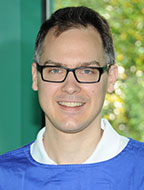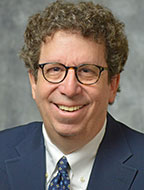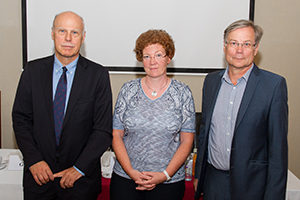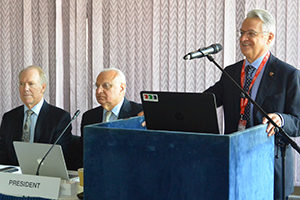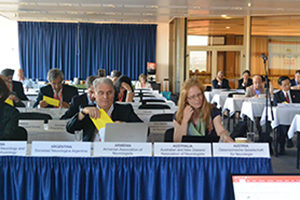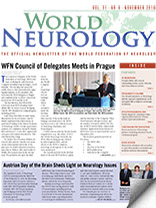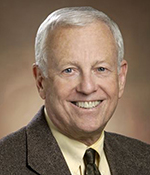
Donald Gilden, MD
By Donald H. Silberberg, MD
For Donald Gilden, MD, his beginnings in Baltimore in many ways foreshadowed what was to become a distinguished career in neurology and virology. Don excelled in his studies while developing into a talented baseball pitcher, good enough to receive an offer from the Baltimore Orioles to join its leading farm team as a prospective big-leaguer. When Don broke the exciting news to his father, his father looked at him — an ace student who had been accepted to Dartmouth College — and said he was destined for great things: in college, not on a baseball field. Don accepted his father’s advice, bringing his combination of a competitive spirit, persistence, and teamwork when he enrolled at Dartmouth. So, how did his early years contribute to the development of such a remarkable career?
Don returned to Baltimore for medical school and the University of Maryland, which later recognized him as one of its most distinguished alumni. He trained in neurology at the University of Chicago, which recognized him as a distinguished alumnus. There he met his wife Audrey and began their devoted 49 years together. He then spent two years as a neurologist at the Walter Reed National Military Medical Center. He correctly saw that the field of neurovirology held great promise with so many unanswered questions. In 1969, he began his scientific career as a fellow in neurovirology at the Johns Hopkins School of Medicine. In 1970, his background uniquely qualified him for the faculty of the University of Pennsylvania’s department of neurology and its affiliate the Wistar Institute to attempt to find the virus that causes multiple sclerosis. Penn and Wistar had just established the first comprehensive research and clinical care center for MS, and Don quickly became a key member of the team.
A powerful technique at that time for detecting latent viruses was so-called co-cultivation, growing human cells that might contain a virus together with well-characterized lines of cells that had been maintained for many generations in vitro, and were known to be free of viruses. This required finding fresh brain and spinal cord tissue from recently deceased individuals with MS and from individuals known to not have MS. A brain bank registry was established. Don made countless trips to autopsy suites throughout Pennsylvania, often on short notice in the middle of the night. The nearby Philadelphia medical examiner’s office became a source of control tissues. In the course of these many unrewarding attempts to find an MS virus, Don discovered that the two principal human herpes viruses, Herpes simplex virus (HSV) and varicella zoster virus (VZV), could be found in latent forms in virtually all dorsal root and trigeminal ganglia at postmortem, whether from individuals with MS or controls.
This remarkable finding soon became a major focus of Don’s research: How did the virions remained latent, what activated them, and how could VZV cause chicken pox in children and then shingles later in life? In order to further develop his molecular biology skills, in 1980 and 1981 Don joined Yechiel Becker’s laboratory in the department of molecular virology at the Hebrew University-Hadassah Medical Center in Jerusalem as a visiting professor. While in Jerusalem, Don found time to join a fast pitch softball league and become captain of the Israeli team with teammates who were 15 to 20 years younger than Don, playing the position of catcher. They played in the Maccabiah Games, Israel’s Olympics.
Returning to Penn, he began to explore the many facets of VZV, leading to landmark discoveries that link the virus to giant cell arteritis in its many clinical phenotypes, shingles, temporal arteritis, ischemic optic neuropathy, cerebral and multi-organ vasculitis, and, most recently, Takayasu’s arteritis. This opened the way to revolutionize treatment. At the ztime of his death, scores of colleagues throughout the United States who had provided biopsy samples, or were aware of his findings, reported to Don that their patients who were doing poorly with conventional corticosteroid treatment responded quickly to anti-viral agents, e.g. valacyclovir. This reinforced what he was seeing at the University Colorado, and undoubtedly will be the subject of clinical trials (if they are really needed) and future publications.
While conducting his research at Penn, Don quickly gained the reputation as a go-to neurologist for colleagues in many departments throughout Philadelphia, and ultimately the United States, for help in solving difficult neurological problems as an expert clinician and later as a neurovirologist. He was a true triple threat in every respect, an outstanding teacher, astute clinician, and extraordinary scientist.
In 1985, Don became professor and chair of the department of neurology at the University of Colorado, remaining chair until 2009. Notably, he expanded his successful research program while developing a nationally prominent department of neurology. His abilities and energy as a teacher were recognized when he received the Outstanding Teacher Award from neurology residents four times. Don was honored with many other national and international awards, including the Alumni Award for Distinguished Service from the University of Chicago, the Pioneer Award of the International Society of Neurovirology, and the 2008 Honor Award and Gold Key for outstanding contributions to medicine and distinguished service to mankind from the University of Maryland School of Medicine. He was elected to the Association of American Physicians, to fellowship in the American Association for the Advancement of Science, and to the Johns Hopkins Society of Scholars. He held leadership positions in many professional societies during his career, and he remained active on many editorial boards, with the National Institutes of Health (NIH) and the National Multiple Sclerosis Society study sections until his death.
A measure of the friendship and loyalty that he inspired was the fact that his principal laboratory assistants who joined his laboratory in the late 1970s stayed as members of his team, from Philadelphia, to Jerusalem, to Denver, and until their retirements over the last several years.
Don continued his research even after discovering that he had an aggressive renal carcinoma, enduring a difficult 18 months of therapies, finally succumbing on Aug. 22, 2016. In his last months, he identified five genes actively expressed during the process of latency. This was consistent with his having lived his life to the fullest. As late as early August, he worked with his colleagues to ensure that his grants would continue funding the research team and that the decades of advances he made in unraveling the nature of the varicella zoster virus would continue.
To cite some numbers: Don was an author on more 420 papers and remained the principal investigator on both an NIH Program Project Grant and an R01 until his death. He trained 26 graduate students and postdoctoral fellows, all of whom but the most recent hold important faculty positions in the United States, Canada, Japan, and Norway. He was mentor to countless medical students and residents, and consultant to his peers throughout the world. He held leadership positions in numerous professional societies and remained active on many editorial boards and NIH study sections until his death.
Don played to win at everything he did. He enjoyed skiing, becoming so accomplished that one could mistake him for a professional. He enjoyed teaching his friends and colleagues (including me) how to better navigate the slopes.
He was a serious violinist, never traveling without his instrument and practicing every day, even throughout his illness. In addition to recitals at national meetings, I enjoyed hearing him practice in hotel rooms in many countries as we attended meetings and in his home in Denver. When possible, Don added attendance each year to a national or international violin competition, including the International Violin Competition of Indianapolis, to his neurology and virology meetings schedules.
Don had a warm and engaging personality that endeared him to many of us. He and his wife maintained enduring friendships and were extremely hospitable to those of us who showed up in Denver from time to time.
However, where Don really devoted his energies and love was with his family, Audrey, their sons Daniel, Adam, and Paul, and their families. He and Audrey have been fully involved in their lives, leading to incredibly close ties among all of them. Although theirs is the greatest loss, Don’s passing leaves a tremendous void in neurology and virology, and he will be sorely missed by his many students, trainees, friends, and colleagues. May he rest in peace.
References
- Gilden, D.H., Rozenman, Y., Murray, R., Devlin, M., Vafai, A.: Detection of Varicella Zoster Virus Nucleic Acid In Neurons of Normal Human Thoracic Ganglia. Ann. Neurol. 22:377-380, 1987
- Gilden, D.H., Devlin, M., Wellish, M., Mahalingam, R., Huff, C., Hayward, A., Vafai, A.: Persistence of Varicella Zoster Virus DNA in Blood Mononuclear Cells of Patients With Varicella Or Zoster. Virus Genes 2:299-305, 1988.
- Gilden, D., White, T.M., Nagae, L., Gurdin, W.H., Boyer, P.J., Nagel, M.A.: Successful antiviral treatment of giant cell arteritis and Takayasu’s arteritis. JAMA Neurology, 72:943-6,2015.
- Golas, L., Bennett, J.L., White, T.M., Skarf, B., Lesser, R., Nagel, M.A., Gilden, D.: Varicella Zoster Virus in Ischemic Optic Neuropathy. Ophthalmology, 122: 2142-5, 2015.
